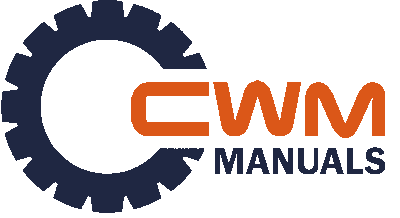Reset the Walbro Carburetor to Default Settings
For Walbro Carburetor Troubleshooting, a good place to start is with the “default” settings. To do this, tighten both screws all the way in (don’t apply a lot of torque, just enough) then back them out 1½ full turns. At this point, the engine should start and run, although it may not run well. If you can’t start it at this point, try turning the screws ¼ of a turn at a time in either direction until something happens. If that doesn’t work the issue is likely something else, like a clogged jet or weak spark.
Resetting a Walbro carburetor to default settings can vary depending on the specific model of the carburetor. However, here are the general steps you can follow:
Locate the carburetor adjustment screws. There are typically three screws: the idle speed screw, the low-speed adjustment screw, and the high-speed adjustment screw.
Turn each screw clockwise until it is lightly seated. Be careful not to overtighten the screws as this can damage the carburetor.
Turn the idle speed screw counterclockwise until it is approximately 1/8 of a turn from fully open. This will set the idle speed to its default setting.
Turn the low-speed adjustment screw counterclockwise until it is 1-1/2 turns from fully closed. This is the default setting for the low-speed adjustment.
Turn the high-speed adjustment screw counterclockwise until it is 1-1/2 turns from fully closed. This is the default setting for the high-speed adjustment.
Start the engine and let it warm up for a few minutes.
Adjust the idle speed screw to achieve the desired idle speed. The recommended idle speed should be specified in the engine’s manual.
Test the engine’s performance under various loads and adjust the low-speed and high-speed screws as needed to achieve the best performance. The recommended settings for these screws can also be found in the engine’s manual.
Walbro Carburetor Starts Then Stops After a Few Seconds
The Walbro carburetor could be clogged. A clogged carburetor is most commonly caused by leaving fuel in the chainsaw, trimmer, blower, or brushcutter for a long period. Over time, some of the active ingredients in the fuel may evaporate, leaving behind a thicker, stickier substance. This sticky fuel can clog up the carburetor and prevent the engine from starting. If the carburetor is clogged, try cleaning it with a carburetor cleaner. If cleaning the carburetor isn’t effective, consider rebuilding or replacing the carburetor.

Adjusting the Idle LA (Low-Speed) Screw
The idle mixture adjustment screw is the one marked by an L on the casting of the carburetor. Turn the screw very slowly counterclockwise while listening to the sound of the engine. Keep turning until the engine speed starts to drop, then make a note of this point. Now start turning the screw clockwise, the engine should accelerate up to a peak, then its speed should start to drop again, make a note of this position. Now just set the screw in the center, between those two positions.
Adjusting the High-Speed Screw
For this one, we want to go ahead and repeat the procedure we used on the first screw, only with the engine at full throttle: slowly adjust it counterclockwise until the engine speed drops, then clockwise, and center the screw between those two points.
Walbro Carburetor Fine Tuning
Keep in mind that turning the screws counterclockwise enriches the mixture (more fuel to air) and turning it clockwise leans the mixture (more air to fuel). An engine that runs too rich will incompletely burn the excess fuel, leading to increased plug fouling and more smoke in the exhaust, while an engine that runs too lean will run way hotter. Either way, it’s not producing the most power. It’s always better to err on the rich side with any engine, doubly so with a two-cycle engine since lean fuel also means lean lubrication.
To achieve this optimal slightly rich mixture, you need to turn the high-speed screw counterclockwise until the engine starts to run roughly at full throttle. With the engine still at full throttle, turn it clockwise just enough for the engine to run smoothly.
Walbro Carburetor Acceleration
Idle the engine for a few seconds, then give it full throttle. The engine speed should ramp up to full speed within a few seconds. If it hesitates, turn the idle speed adjustment screw counterclockwise, no more than the width of the adjuster screw’s slot at a time, until you get a smooth acceleration.
Walbro Carburetor Deceleration
Run the engine at full throttle for a few seconds, then let go of the throttle. The engine speed should return to a smooth idle in two seconds or so. If it’s slow to return to idle or idles erratically, adjust the idle speed adjustment screw, no more than the width of the adjuster screw’s slot at a time, until you get a smooth deceleration.
Walbro Carburetor Troubleshooting Final Step
Double Check the Idle Speed
Turn the screw clockwise to speed up the idle, and counterclockwise to slow it down. If your equipment has a clutch that engages automatically when the engine speeds up, you’ll want to adjust the idle speed just below the threshold of where the clutch engages. If not, you’ll want to adjust it to the lowest speed so that the engine runs smoothly. Walbro Carburetor Troubleshooting manuals can be found in the manuals section for the relevant Walbro model.
